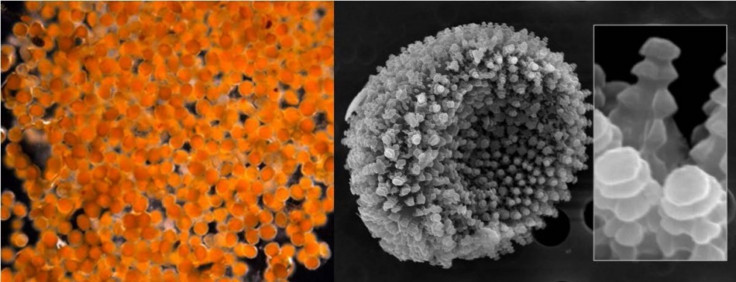Mysterious ‘Orange Goo’ in Alaska is Fungal Spores, Not Microscopic Eggs: NOAA

Scientists at National Oceanic and Atmospheric Administration (NOAA) said on Thursday that the Mysterious orange goo collected on the shorelines of a remote Alaska village turns out to be substance made up of fungal spores.
The new analysis from the National Oceanic and Atmospheric Administration (NOAA) corrects the estimates made by Alaska-based NOAA scientists last week, which said that the material is made up of fungal spores, not microscopic eggs or embryos deposited by some form of crustacean.
The orange substance was sent off to a NOAA lab in South California for further testing after the initial results from the Juneau laboratory were released.
A team of scientists at NOAA's Center for Coastal Environmental Health and Biomolecular Research, based in Charleston, S.C., did a follow-up examination on a sample sent from Alaska and determined that the material was consistent with spores from a fungi that cause rust, a disease that infects only plants, causing a rust-like appearance on leaves and stems, NOAA said.
But according to NOAA, it is still unknown whether the spores are among the 7,800 known species of rust fungi.
“At this point, the best identification we can give to as the origin of these spores is a rust fungus. The spores are unlike others we and our network of specialists have examined; however, many rust fungi of the Arctic tundra have yet to be identified, Steve Morton, a scientist with the NOAA Charleston lab, said in a statement.
Earlier this month, the goo material was first found in the water and on coastlines of Kivalina, an Inupiat Eskimo community of 400 at the tip of a barrier reef on Alaska's northwest coast.
The goo material was also found in the Wulik River, which flows into the lagoon and is a source of drinking water for the villagers.
Villagers have suspended storing water from the river fearing that the material might be pollution from the nearby Red Dog Mine, the world's largest zinc producer. However, the early tests of the material by the scientists showed that it was a biological material, not mining waste or a petroleum product from the nearby Red Dog Mine.
The sticky orange material, which dried into a powder, has washed away from Kivalina, said Julie Speegle, a spokeswoman for NOAA's National Fisheries Service in Alaska, Reuters reported.
Speegle said the material was likely harmless. Rust is a disease that only affects plants, so there's no cause for alarm, she said, adding that details about its origins remained a mystery.
© Copyright IBTimes 2024. All rights reserved.





















